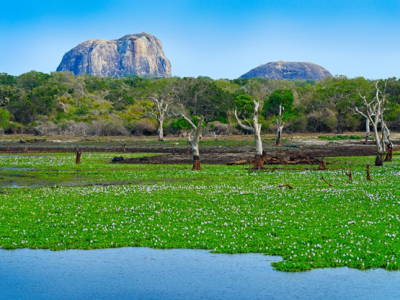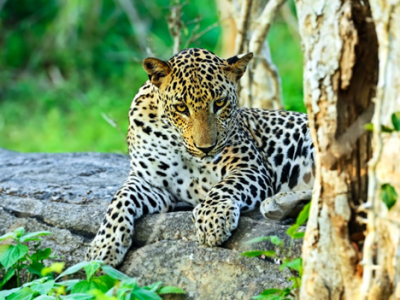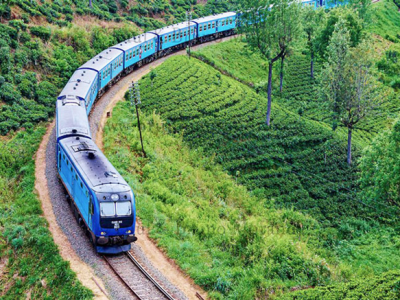Wildlife Lovers’ Guide to Yala National Park
There’s no secret that Yala is Sri Lanka’s most popular national park. Two types of protected natural areas are available in the Yala region: a strict nature reserve and a nature-rich national park. Yala has more species of animals than any other wildlife reserve in Sri Lanka, and it also receives the most visitors. Nearly 130,000 acres of land are under the park’s administration, and it is divided into five sections. There are also a few dense blocks of wood, scrub, meadows, tanks, and lagoons spread out throughout the landscape. At present, only two of the five blocks are accessible to the general public. Located in southeastern Sri Lanka, Yala abuts the breathtaking Indian Ocean and has been a wildlife refuge since 1900 and a national park since 1938.
When the British were in control, the park was ironically utilized as a hunting place for the wealthy. Around 44 different kinds of animals and 215 different kinds of birds may be found in Yala. More leopards live there than anywhere else in the world, making them one of its best-known inhabitants.
Yala National Park: A Brief History
Spanish geographer Cipriano Sanchez included Yala on his map in 1560. It has been 300 years since the park’s abandonment, as documented in his records, because of safety concerns. Under the Forest Ordinance, Yala and Wilpattu were declared reserves by the government on March 23, 1900. Located between the Menik and Kumbukkan River systems, the reserve’s original size was 389 square kilometers. During that time, the nature preserve was not known by its current name, Yala.
The agricultural minister, D. S. Senanayake enacted the Flora and Fauna Protection Ordinance, making Yala a national park on March 1, 1938.
Physical features of Yala
Metamorphic rock from the Precambrian age, divided into the Vijayan and Highland groups, makes up the majority of the Yala region. Among these six soil types, low-humic gray soil and reddish-brown soil are particularly common. Yala lies on the southern tip of Sri Lanka’s longest peninsula. The landscape is characterized by a flat, gently sloping plain that extends toward the ocean and gradually rises inland.

The park is located in a semiarid climate zone, and the northeast monsoon is the primary source of precipitation there. Between these months, January and April, we typically see the majority of the year’s precipitation and average temperatures. Yala has moderate winds during the southwest monsoon, which is windier than the northeast monsoon.
Yala National Park’s Wild Animals
Wild animals abound in Yala, and the park is home to many different kinds, including several that are found only in Sri Lanka. The Sri Lankan elephant congregates in enormous herds around Yala’s watering holes.
Current findings indicate that Yala has the highest density of the enigmatic Sri Lankan leopard. Due to the absence of natural predators, leopards in Sri Lanka’s national parks are rather easy to spot, despite being far more nocturnal than their counterparts in other locations around the world.

The climate in Yala National Park
Yala has a warm and muggy climate since it is in Sri Lanka’s dry zone. Mostly semiarid thorn scrub, with some more heavily forested areas and scattered mangrove stands in and around the coastal lagoons. In the dry season (May/June to October), average temperatures may get to 37 degrees Celsius. This time of year, animals are forced to congregate at specific waterholes, making for excellent safari viewing conditions.
From November through January, the northeast monsoon provides much-needed reprieve to the region’s animals and plants, and the jungles’ vibrant colors come to life
The best time to visit Yala
The dry months of February through June are prime time for exploring Yala National Park. The animals that come out to drink may be more easily seen now that the ponds are drier. The months of February and March are leopards’ peaks.
How do I get to Yala?
The national park spans the districts of Hambantota and Monaragala in the southern and eastern provinces of Sri Lanka, respectively. Palatupana, located 12 kilometers from Kirinda, serves as the park’s entry. Colombo and Palatupana’s entrance points are separated by a distance of 305 kilometers.
Yala National Park’s main entrance is in the town of Tissamaharama. To reach Palatupana, guests must travel 20 kilometers through Kirinda. All approaching cars at Palatupana are given a tracker and given informational pamphlets by the helpful staff at the well-designed visitor center. Park visitors may see animals from the comfort of the open top of a Jeep provided by the park.
1. Getting to Yala National Park by Airplane
The Bandaranaike International Airport in Katunayake is the international airport that serves Sri Lanka. It is located on the outskirts of Colombo and serves as a gateway for flights arriving from most parts of the world. The quickest route from the airport in Sri Lanka to Yala National Park is via flight. From Mattala Rajapaksa International Airport, it is just a 45-minute trip to Hambantota, from whence you may continue to Yala National Park.
2. Travel by train
It takes roughly 9 hours by rail to reach Yala National Park from Colombo. Daily between 9:45 AM and 8 PM, a train leaves Colombo Fort Station bound for Haputale. From Haputale, it’s roughly an hour and a half’s journey to Yala National Park.

3. Getting to Yala National Park via bus
It’ll take you almost 300 kilometers on the Southern Expressway to reach Yala National Park from Colombo Airport. Drive to Yala National Park from Bandaranaike International Airport in comfort, since roads in Sri Lanka are normally in excellent condition. The fastest and most comfortable way to get there is in a private vehicle that has been reserved in advance.
A bus ride from Colombo Bastian Mawatha Bus Terminal to Kataragama will take around 8 hours; from Kataragama, it’s another 30-minute drive to Yala National Park. The bus trip will take about 8.5 hours.
Wrapping up
Yala, one of Sri Lanka’s most popular national parks, is a haven for exotic animals. Its warmer temperature and rich biodiversity make it a great place to see exotic animals up close without having to go far. February to June, during the dry season, is the ideal time to explore Yala National Park.


Customer
Thanks for your marvelous posting! I definitely enjoyed reading it, you’re a great author. I will ensure that I bookmark your blog and definitely will come back very soon. I want to encourage you to continue your great writing, have a nice afternoon!
Customer
Thanks for sharing your thoughts on %meta_keyword%. Regards
Customer
It’s awesome to pay a visit this website and reading the views of all mates concerning this article, while I am also keen of getting experience.
Customer
I was wondering if you ever considered changing the layout of your blog? Its very well written; I love what youve got to say. But maybe you could a little more in the way of content so people could connect with it better. Youve got an awful lot of text for only having one or two images. Maybe you could space it out better?
Customer
My brother suggested I might like this blog. He used to be totally right. This post actually made my day. You cann’t believe just how so much time I had spent for this information! Thank you!
Customer
I have been surfing online more than 2 hours today, yet I never found any interesting article like yours. It’s pretty worth enough for me. In my opinion, if all site owners and bloggers made good content as you did, the internet will be much more useful than ever before.
Customer
Howdy! I know this is somewhat off-topic but I had to ask. Does building a well-established blog like yours take a massive amount work? I’m completely new to operating a blog but I do write in my diary daily. I’d like to start a blog so I will be able to share my own experience and views online. Please let me know if you have any ideas or tips for new aspiring bloggers. Appreciate it!
Customer
Have you ever considered about including a little bit more than just your articles? I mean, what you say is valuable and all. However think of if you added some great visuals or video clips to give your posts more, “pop”! Your content is excellent but with images and clips, this website could undeniably be one of the most beneficial in its niche. Superb blog!
Customer
This post will help the internet people for creating new blog or even a blog from start to end.
Customer
I pay a visit daily some web pages and websites to read articles, but this webpage offers quality based content.
Customer
Can I just say what a relief to find someone who actually knows what they’re talking about on the net. You certainly understand how to bring an issue to light and make it important. More people should read this and understand this side of the story. I can’t believe you’re not more popular since you certainly have the gift.
Customer
Hi my family member! I want to say that this article is awesome, great written and come with almost all important infos. I’d like to see more posts like this .
Customer
I have been surfing online more than three hours today, yet I never found any interesting article like yours. It’s pretty worth enough for me. In my opinion, if all webmasters and bloggers made good content as you did, the internet will be much more useful than ever before.
Customer
This is my first time go to see at here and i am really impressed to read all at one place.
Customer
Your method of describing everything in this piece of writing is really nice, all can effortlessly know it, Thanks a lot.
Customer
Asking questions are in fact nice thing if you are not understanding anything fully, except this piece of writing provides good understanding even.
Customer
Thank you for sharing your info. I truly appreciate your efforts and I am waiting for your next post thank you once again.
Customer
It is not my first time to pay a visit this website, i am visiting this site dailly and take good information from here every day.
Customer
hi!,I love your writing so so much! percentage we keep up a correspondence more approximately your post on AOL? I need an expert in this space to unravel my problem. May be that is you! Looking forward to peer you.
Customer
Howdy very nice blog!! Guy .. Beautiful .. Superb .. I will bookmark your blog and take the feeds also? I am glad to find so many useful information here in the publish, we need develop more strategies in this regard, thank you for sharing. . . . . .
Customer
Nice post. I was checking continuously this blog and I am impressed! Very useful information particularly the last part 🙂 I care for such info a lot. I was seeking this particular info for a long time. Thank you and good luck.
Customer
What’s up, I wish for to subscribe for this blog to take newest updates, thus where can i do it please help.